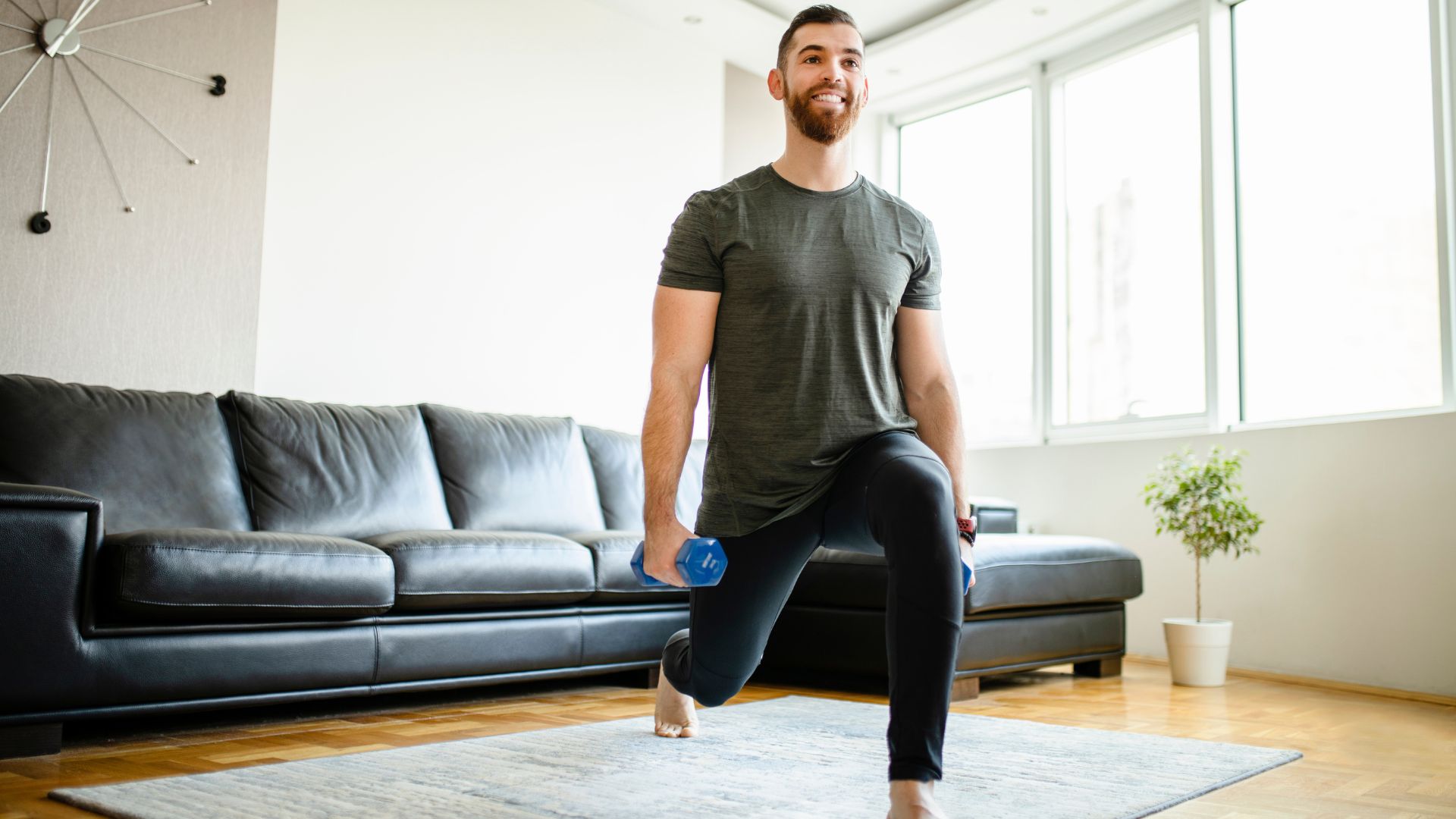
Leg workouts usually mean one thing: squats, and lots of them. This is a great muscle-building move, but it pays to do a variety of exercises to help you build a balanced lower body.
This minimal equipment workout from fitness trainer Rhiannon Bailey uses six different dumbbell exercises to help you build a strong set of legs and glutes, whether you're at home or at the gym.
If you don't own any weights, take a look at our guide to the best adjustable dumbbells, which are ideal for at-home training as they allow you to change their weight to suit the exercise you're doing.
The six exercises in Bailey's workout are split into three supersets (or pairs) which are to be performed together with no rest in between.
In practice, this means for the first superset you'll perform 10-12 reps of alternating reverse lunges, move straight into 10-12 goblet squats, then rest 60 seconds before repeating this sequence.
To finish the workout, complete three rounds of each superset. If you're wondering how to perform any of the exercises in Bailey's session, you can watch her demonstrate each one in the video below.
Watch Rhiannon Bailey's lower-body dumbbell workout
Many people are familiar with the two primary benefits of leg workouts: building lower-body strength and muscle. However, that's not the only upside to a stronger lower half.
You use your legs every day, so strengthening them can help you perform seemingly routine tasks like walking, running, picking up heavy objects, or even carrying the groceries with greater ease.
Moving extra load with your legs in workouts like this one can strengthen your bones and joints too, making you less susceptible to injuries in your knees, hips, and ankles.
Your lower body also houses many of the largest muscles in your body. As a result, they require more energy to move, so leg workouts can burn more calories than sessions targeting other parts of your body.
Bailey's workout is an example of a strength training session, so you'll probably want to give your legs at least 24 hours off lifting weights after finishing it to allow them to recover and grow.
A good option if you want to stay active the following day is to work your upper-body muscles instead, which you can do with this 20-minute dumbbell session. Or, if you need a day away from the dumbbells, try this recovery day workout instead.







